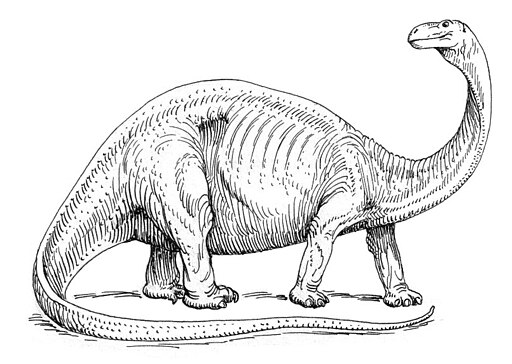The Thunder Lizard
Brontosaurus, whose name means “thunder lizard,” was a massive, long-necked dinosaur that lived during the Late Jurassic period, around 156 to 146 million years ago. It belonged to the group of sauropod dinosaurs, characterized by their enormous size, long tails, and long necks.

| Meaning | Thunder lizard [Bronto-saurus] |
| Pronunciation | BRON-toh-sore-us |
| When: | Late Jurassic (about 156–145 million years ago) |
| Where: | North America (USA, Wyoming, Utah) |
| What: | Sauropod (herbivorous) |
| Weight: | Estimated around 15 metric tons |
| Length: | Approximately 22 meters (72 feet) |
| Diet: | Herbivorous (ate high vegetation) |
| Discovered: | First described by Othniel Charles Marsh in 1879 |
The history of Brontosaurus is unique in paleontology. Initially, the name “Brontosaurus” was assigned to fossils that were later reclassified as belonging to another dinosaur genus, Apatosaurus. However, recent research has suggested that there are enough anatomical differences to consider Brontosaurus a valid genus once again, separate from Apatosaurus.
Brontosaurus was one of the largest land animals to have ever existed, reaching lengths of up to 22 meters (72 feet) and weighing around 15 to 20 tons. Its body was supported by four sturdy legs, each ending in broad, rounded feet.
The neck of Brontosaurus was long and flexible, allowing it to reach vegetation high above the ground.
Its head was relatively small compared to its body, with nostrils positioned on top of its head, likely to help it breathe while partially submerged in water.
One of the most famous features of Brontosaurus is its long, whip-like tail, which could have been used for balance and possibly defense against predators.
Brontosaurus had a herbivorous diet, primarily feeding on ferns, conifers, and other vegetation that grew abundantly during the Jurassic period.
